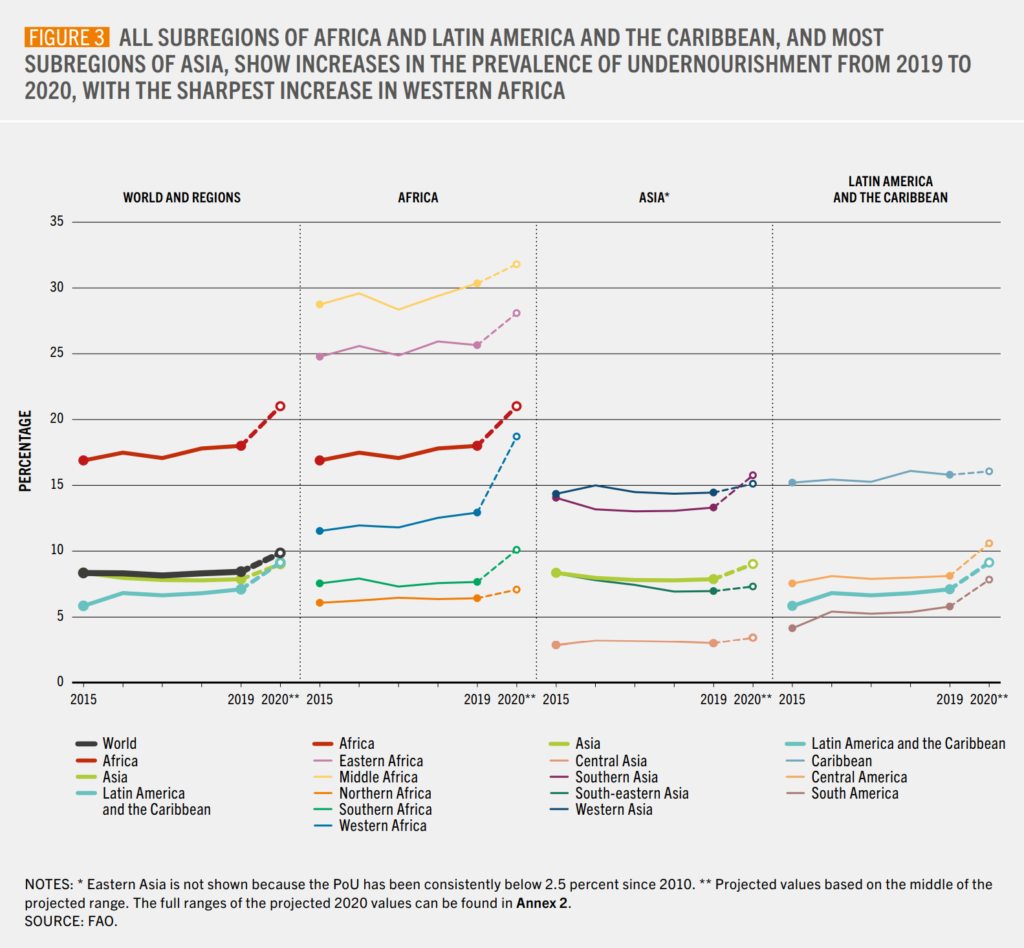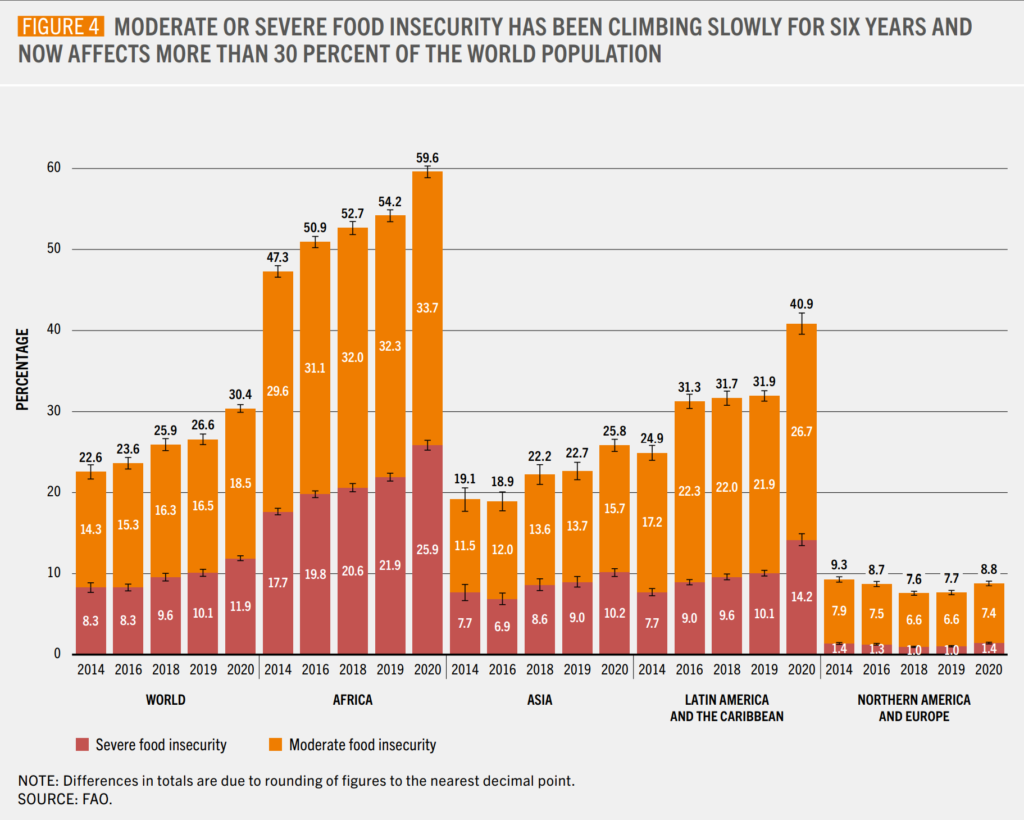UN: World hunger continued its six-year rise in 2020 – Up to 160 million more people faced hunger in 2020 than in 2019 – “The world is at a critical juncture”

12 July 2021 (UNFAO) – The world is in a very different place to where it was six years ago when it committed to the goal of ending hunger, food insecurity and all forms of malnutrition by 2030.
At the time, we were optimistic that with transformative approaches, past progress could be accelerated, at scale, to put us on track to achieve that goal.
Yet, the past four editions of The State of Food Security and Nutrition in the World (SOFI) revealed a humbling reality.
The world has not been generally progressing either towards ensuring access to safe, nutritious, and sufficient food for all people all year round (SDG Target 2.1), or to eradicating all forms of malnutrition (SDG Target 2.2).
Conflict, climate variability and extremes, and economic slowdowns and downturns are the major drivers slowing down progress, particularly where inequality is high. The COVID-19 pandemic made the pathway towards SDG2 even steeper.
So, if the world is at a critical juncture, where do we stand now? And what can be done to help us build forward better and put us on track to achieving Zero Hunger?

In 2020, between 720 and 811 million people faced hunger
The number of people in the world affected by hunger increased in 2020 under the shadow of the COVID-19 pandemic. After remaining virtually unchanged from 2014 to 2019, the prevalence of undernourishment (PoU) climbed to around 9.9 percent in 2020, from 8.4 percent a year earlier.
In terms of population, taking into consideration the additional statistical uncertainty, it is estimated that between 720 and 811 million people in the world faced hunger in 2020. Considering the middle of the projected range (768 million), 118 million more people were facing hunger in 2020 than in 2019 – or as many as 161 million, considering the upper bound of the range.
We need bold actions
Around 660 million people may still face hunger in 2030, in part due to lasting effects of the COVID-19 pandemic on global food security – 30 million more people than in a scenario in which the pandemic had not occurred.
To drive that number home, in 2030, the number of people facing hunger may be close to double the current population of the United States or triple that of Brazil.
Unless bold actions are taken to accelerate progress, especially actions to address major drivers of food insecurity and malnutrition and the inequalities affecting the access of millions to food, hunger will not be eradicated by 2030. […]

Beyond hunger, nearly one in three people did not have access to adequate food in 2020
While the global prevalence of moderate or severe food insecurity has been slowly on the rise since 2014, the estimated increase in 2020 was equal to that of the previous five years combined.
Nearly one in three people in the world (2.37 billion) did not have access to adequate food in 2020 – that’s an increase of almost 320 million people in just one year. […]
Under the shadow of COVID-19
Last year’s SOFI report stressed that the COVID-19 pandemic was having a devastating impact on the world’s economy, triggering an unprecedented recession not seen since the Second World War, and that the food security and nutrition status of millions of people, including children, would deteriorate if we did not take swift action.
Unfortunately, the pandemic continues to expose weaknesses in our food systems, which threaten the food security and nutrition of millions of people around the world.
Also, efforts to eradicate malnutrition in all its forms have been challenged by disruptions in essential nutrition interventions and negative impacts on dietary patterns during the COVID-19 pandemic. This is particularly worrisome, since malnutrition early in life can have lasting effects on health and productivity. Urgent actions are needed to ensure access to affordable healthy diets for all. [more]
The State of Food Security and Nutrition in the World 2021 The world is at a critical juncture


